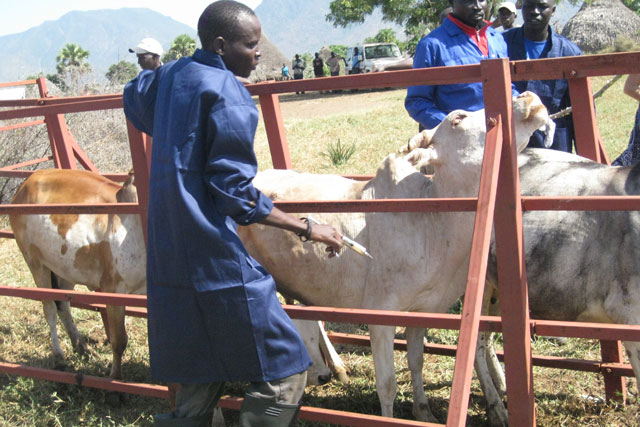Contagious bovine pleuropneumoinia (CBPP) is a cattle disease that is caused by Mycoplasma mycoides with a mortality rate of 50 per cent.
Bovine pleuropneumonia is exhibited by an affected animal standing by itself with its head lowered and extended, the back slightly arched and its limbed turned out.
In many cases, the disease spreads faster and the animal often lies down and in severe cases die after one to three weeks.
Related
How to deal with mange disease in cattle
Zero grazing reduces tick diseases by upto 8 times study
ICIPE seeks to tame bee diseases with training
The disease is spread through direct contact between an infected and a vulnerable animal which becomes sick by inhaling droplets of saliva disseminated by coughing.
Affected animals sometimes partially recover after a period of three to four weeks. These animals nevertheless may be capable of spreading the disease by acting as unapparent carriers.
When a farmer notices the above symptoms in their cows, he or she can notify an agricultural extension officer within their region, preferably a veterinary officer. Tests will then be done and appropriate measures such as vaccination recommended.
The disease can be controlled by restricting the movement of animals. This is done by separating the infected animal(s) from the rest of the herd.
Affected animals can also be slaughtered so as to remove the existing concentrations of the disease. This is done through inspection by veterinary officers who conduct serology tests in the affected herd.

A veterinary officer vaccinationg cows in the past/PHOTO/FILE
CBPP was detected in Europe as early as the 16th century but was spread throughout the world by increased international trade in live cattle in the second half of the 19th century.
In Kenya, the disease has affected livestock in Northern and Southern Kenya mainly the pastoralist counties of Wajir, Narok, Laikipia and Garissa killing more than half of the affected animals yearly according to the Kenya Agricultural and Livestock Research Organization (KALRO).
In 2007, KALRO developed a thermo-stable vaccine to control CBPP in the country. In this, cattle in the affected zones were vaccinated twice at three monthly intervals and thereafter annually with thermo-stable vaccine.
KALRO report of 2016, however, revealed that although 43.5 per cent of pastoralists were treating CBPP cases with antimicrobials, 12.9 per cent of them had no knowledge of any prevention method and 10 per cent would do nothing in the event of an outbreak. 62.5 per cent of the sampled herders doubted the effectiveness of using thermo-stable vaccine to control the disease. It further revealed that the communities living within the region perceived trans-boundary movement of cattle as a CBPP threat to their cattle.
















Comments powered by CComment